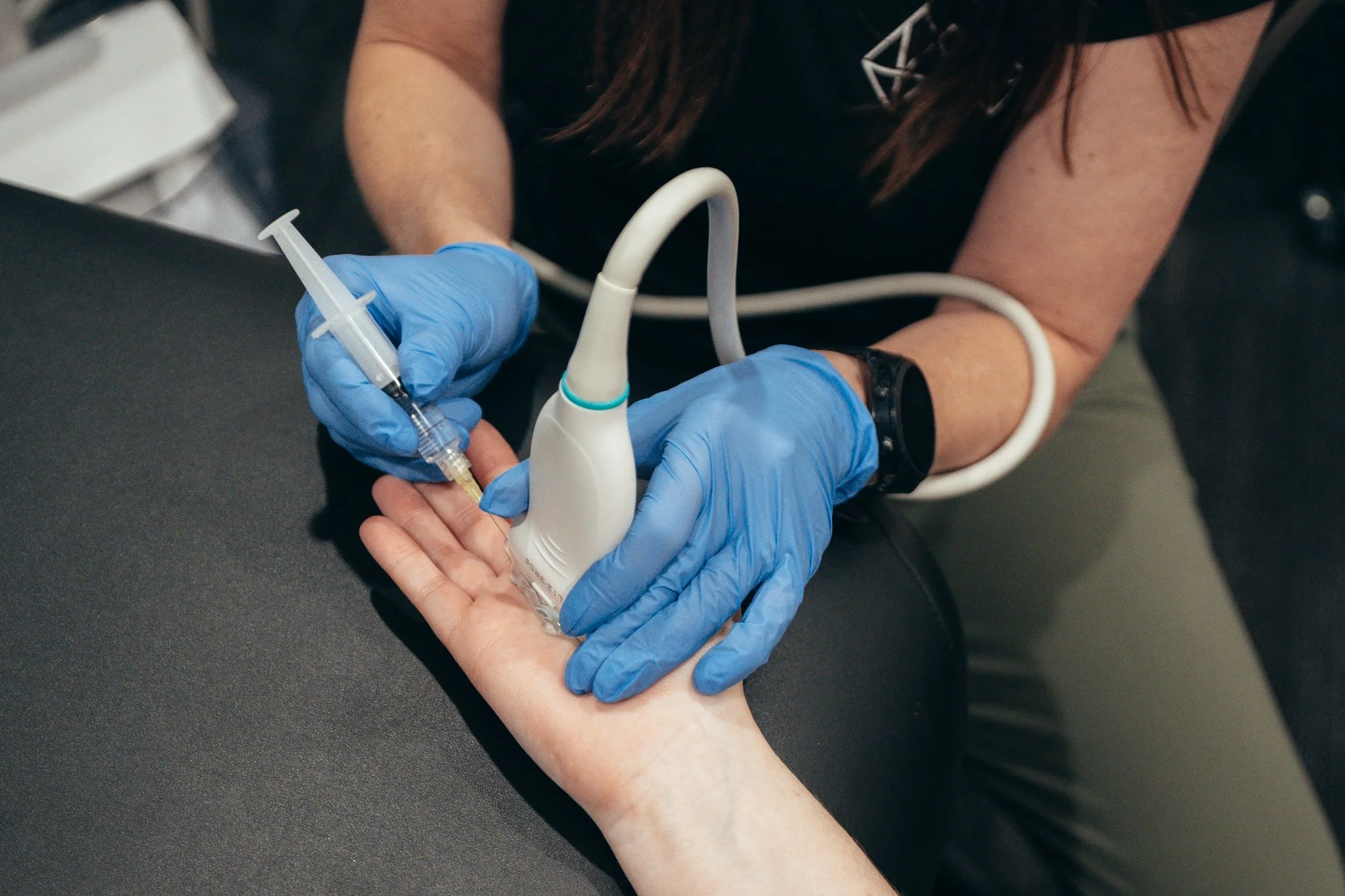As a naturopath, I always look for the most natural options for treatment. Sometimes this is looking at overall diet and lifestyle changes that can modify inflammation in the body. Sometimes this is looking at regenerative injections like prolotherapy or platelet-rich plasma. And other times, corticosteroids are the best option.
The terms steroid injection, cortisone injection, and corticosteroid injection all refer to the same injection. For the purposes of this blog, I will use the term steroid injection moving forward. Sometimes I hear people say incorrectly, “cortisol injection,” but they are referring to this injection.
Steroids are incredible at pulling pain and inflammation out of an area. They can be so good at it that they can cause long-term harm from repeated use. This is why we have clear guidelines on how often and in what indications it is best use them.
When to use steroid injections
There are some indications with good data suggesting that steroids can be the right choice. These are some of the most common indications I see in my personal practice that include, but are not limited to:
Frozen shoulder (adhesive capsulitis)
Mommy thumb (DeQuervain’s Tenosynovitis)
Arthritis (osteoarthritis and rheumatoid arthritis)
Trigger finger/trigger thumb
Bursitis (shoulder and hip)
Dr. Lorna treating a trigger finger with a steroid under ultrasound guidance.
What to expect when getting a steroid injection
I meet with every patient for at least 30 minutes prior to any injection to learn their health history, assess the injury and discuss a treatment plan. If a steroid is indicated, we will review the procedure, any potential side effects and post-care treatment.
On the day of the procedure, I use an ultrasound to help guide the injection to the correct location and may use some numbing beforehand, depending on the location of the injection. There is a numbing medication (an anesthetic) combined with the steroid to help make the procedure as comfortable as possible. The numbing lasts 4-6 hours, and then the steroid is left behind to do its job.
Very commonly, I see people feel better the same evening or within several days. Sometimes it can take people a little bit longer to feel the effects of the steroid.
Are they painful?
Typically, these shots are well-tolerated and not extremely painful. If pain does occur, it usually subsides quickly.
How long does it last?
This is the most common question I get in practice. Unfortunately, the response to this is very nuanced, and you would have to discuss your particular situation with your provider. Some indications can get complete relief with one injection. Others may only get short-term relief. Everybody responds differently to medications, so your response might be different than what is reported in the literature.
What’s most important is that you understand the potential risks and benefits so that you can decide if it’s worth considering for your own body.
What to expect afterwards
Most people are able to drive themselves home or return to their normal daily activity. Physical activity should be minimized for a couple of days after the procedure, and any movements that were known to worsen the symptoms should be minimized during this time.
Keeping the area clean is important to prevent infection. Monitoring for any signs of infection is also important. Placing some heat on the area usually helps relieve any discomfort. Tylenol or NSAIDs are sometimes considered to manage aching from the injection site. Be sure to discuss this with your provider.
Who shouldn’t have steroid injections?
If you have an allergy to any of the medications used in the procedure, this wouldn’t be right for you. Additionally, if you are feeling unwell, actively septic, or suffering from a recent trauma, a steroid is not the right choice. If you have a prosthesis in the affected area, you also would not be a good candidate. Other reasons may also preclude you from receiving a steroid injection that should be reviewed with your healthcare provider.
Is it safe with diabetes? Or while taking blood thinners?
If you have diabetes, the injection is only safe if your blood sugar is well controlled. You may need to provide a recent blood sugar reading before the injection. The injection can raise blood sugar levels for up to two weeks afterward, so it is important to carefully monitor your blood sugars during this time.
If you are taking blood-thinning medications, especially NOACs or warfarin, you may not be a good candidate.
Are steroid injections safe in pregnancy?
Pregnancy is not considered a contraindication, but is treated on a case-by-case basis.
What are the risks of a steroid injection?
After a steroid injection, side effects are generally uncommon. The most frequently observed side effect is a post-injection flare, which typically occurs within the first 24 to 48 hours following the injection. This flare usually subsides within a few days, after which symptoms are expected to improve. Sometimes, a small bruise may appear at the injection site, but this too resolves within a couple of days. There is a slight risk of injury to nearby nerves, fat, or muscle as a result of the injection.
Some individuals may experience facial flushing or changes in their menstrual periods. Occasionally, the skin near the injection site can show signs of depigmentation or dimpling. A very rare but serious side effect is damage to tendons within the joints, particularly tendons that are already weakened or damaged. This complication is uncommon but important to consider in the risk assessment of steroid injections.
Overall, while most side effects from steroid injections are mild and temporary, patients should be informed about these potential effects and advised to monitor for any unusual or persistent symptoms to discuss with their healthcare provider.


